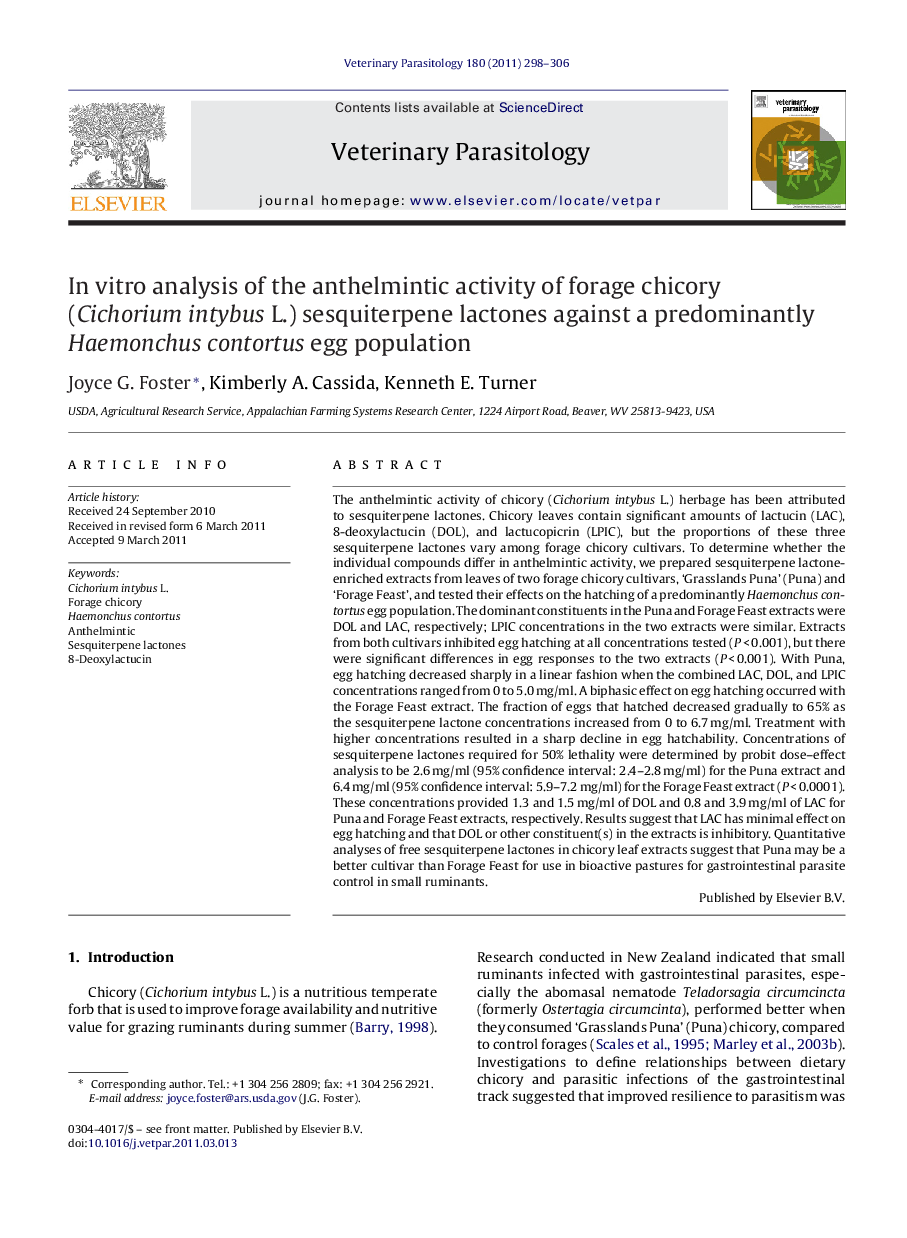| کد مقاله | کد نشریه | سال انتشار | مقاله انگلیسی | نسخه تمام متن |
|---|---|---|---|---|
| 5805719 | 1555722 | 2011 | 9 صفحه PDF | دانلود رایگان |

The anthelmintic activity of chicory (Cichorium intybus L.) herbage has been attributed to sesquiterpene lactones. Chicory leaves contain significant amounts of lactucin (LAC), 8-deoxylactucin (DOL), and lactucopicrin (LPIC), but the proportions of these three sesquiterpene lactones vary among forage chicory cultivars. To determine whether the individual compounds differ in anthelmintic activity, we prepared sesquiterpene lactone-enriched extracts from leaves of two forage chicory cultivars, 'Grasslands Puna' (Puna) and 'Forage Feast', and tested their effects on the hatching of a predominantly Haemonchus contortus egg population. The dominant constituents in the Puna and Forage Feast extracts were DOL and LAC, respectively; LPIC concentrations in the two extracts were similar. Extracts from both cultivars inhibited egg hatching at all concentrations tested (PÂ <Â 0.001), but there were significant differences in egg responses to the two extracts (PÂ <Â 0.001). With Puna, egg hatching decreased sharply in a linear fashion when the combined LAC, DOL, and LPIC concentrations ranged from 0 to 5.0Â mg/ml. A biphasic effect on egg hatching occurred with the Forage Feast extract. The fraction of eggs that hatched decreased gradually to 65% as the sesquiterpene lactone concentrations increased from 0 to 6.7Â mg/ml. Treatment with higher concentrations resulted in a sharp decline in egg hatchability. Concentrations of sesquiterpene lactones required for 50% lethality were determined by probit dose-effect analysis to be 2.6Â mg/ml (95% confidence interval: 2.4-2.8Â mg/ml) for the Puna extract and 6.4Â mg/ml (95% confidence interval: 5.9-7.2Â mg/ml) for the Forage Feast extract (PÂ <Â 0.0001). These concentrations provided 1.3 and 1.5Â mg/ml of DOL and 0.8 and 3.9Â mg/ml of LAC for Puna and Forage Feast extracts, respectively. Results suggest that LAC has minimal effect on egg hatching and that DOL or other constituent(s) in the extracts is inhibitory. Quantitative analyses of free sesquiterpene lactones in chicory leaf extracts suggest that Puna may be a better cultivar than Forage Feast for use in bioactive pastures for gastrointestinal parasite control in small ruminants.
Journal: Veterinary Parasitology - Volume 180, Issues 3â4, 25 August 2011, Pages 298-306